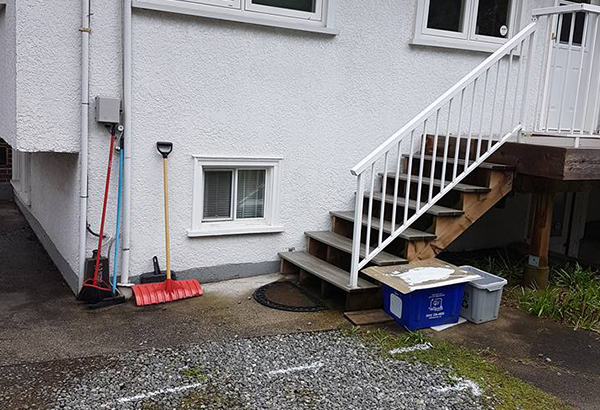 Fully Licensed and Insured
Fully Licensed and Insured Request an Oil Tank Scan
Request an Oil Tank Scan Request a Free Estimate
Request a Free Estimate

Until the 1960s, most homes in Vancouver used oil stored in underground oil tanks for heating. However, when natural gas replaced oil, many of these tanks remained buried beneath the soil. Sixty years later, homeowners are now dealing with the repercussions of these hidden underground oil tanks.
Underground oil storage tanks generally have a usable life of about 20 years before needing to be replaced. Forgotten oil tanks have now far surpassed their best-case life expectancy, and with each passing year, the environmental risk they present grows exponentially. As these underground oil tanks corrode, the potential for rupture resulting in devastating environmental and financial effects increases, as oil remnants from inside the tank seeps into the surrounding soil and waterways.
While oil tank removal can be costly, it is a drop in the bucket compared to the cost of soil decontamination. Therefore, experts recommend that at-risk properties undergo a GRP (ground penetrating radar) oil tank scan.
Because of the costly consequences of soil decontamination, many insurance companies and mortgage providers require an oil tank certificate for properties of concern. This certificate is an official record indicating whether there is or was an oil tank on your property, information easily obtained with a GRP oil tank scan.
Could your property be housing a hidden oil tank? While qualified professionals are the only ones able to issue an oil tank certificate, there are other signs that your property may have had an underground oil tank.
Underground oil tanks were accessed by refueling trucks via filler pipes. But even after homes switched heating methods from oil to natural gas, these filler pipes often remain. Check your property for signs of a buried oil tank by looking for the small metal caps topping the filler pipes; they are approximately 3 inches in diameter and could be hiding just beneath the surface of the soil.
In some cases, you might find these filler pipes inside the home.
Underground oil tanks needed to vent excess vapour from inside the tanks, and this was done through venting pipes installed above the surface. These one-and-three-quarter-inch diameter pipes are often found attached to the side of a home, sloping downwards. However, many of these pipes have been cut or painted over the years, so they may be difficult to spot.
Feeder lines helped supply fuel from the underground tank to the oil furnace. They were often buried underground, but in some cases, evidence of feeder lines is still visible. Copper piping approximately one-quarter to one-half inch in diameter around your foundation or furnace can be a signal that your property once had or still has an underground oil tank. Other signs include crimped pipes around the area of your furnace or concrete that looks as though it has been cut through and then patched up.
In the rare case of an underground oil tank collapsing, it will be visible on the surface by a large depression in the soil. If you have noticed a sudden depression or one that has gradually increased in size, a professional GPR oil tank scan should be done sooner than later to prevent and remedy possible soil and water contamination.
Even if you do not require an oil tank certificate to complete a transaction, obtaining one can be highly beneficial, providing peace of mind that your property is safe and a record that may be required for future mortgage or insurance renewals.